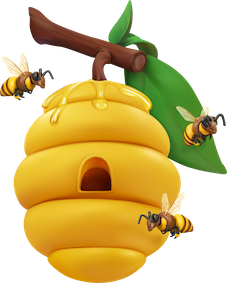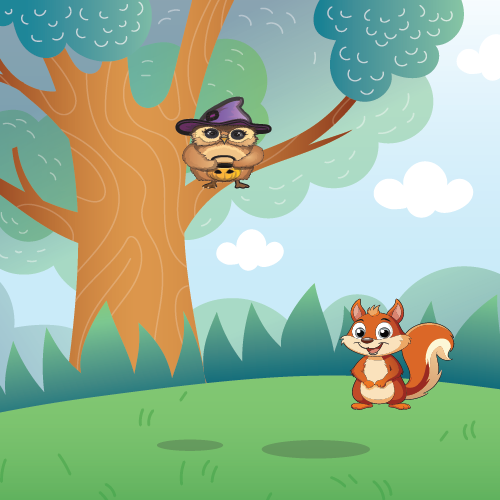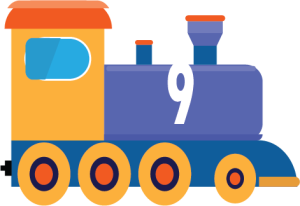
Prep. Lesson 9. Day and night voices
-
-
- Bee puppet
- Soft, bouncy ball Difficulty:
 Prior learning: None
Prior learning: None
-
![]() Students differentiate between a loud daytime voice and a quiet nighttime voice, practising vocal dynamics through interactive puppet activity.
Students differentiate between a loud daytime voice and a quiet nighttime voice, practising vocal dynamics through interactive puppet activity.
![]() Lyrics
Lyrics
Bee, bee, bumblebee,
Can you say your name to me?
 Success Criteria
Success Criteria
- I can correctly use my daytime and nighttime (loud) voice (soft).
- I can repeat the phrases spoken by the puppet using the appropriate voice level.
- I can identify the difference between the daytime and nighttime voices.
- I can participate actively and listen carefully during the activity.
- With the class seated, explain to students that you have brought a new friend and would like to introduce him to the class.
- Using a hand puppet, such as a bumblebee, explain that your friend loves to talk and can use his daytime or nighttime voice.
- Recite the words using the puppet to 'speak' to the class.
- Repeat several times, choosing a new student to speak their name.
- Explain your friend now wants to show you his nighttime voice.
- The puppet will now recite the words to the song in a whisper. Ask students to whisper the rhyme in response. Choose a student to whisper their name.
- Repeat with other students, perhaps using the puppet to land on their heads for fun.
- Ask students if they can hear the difference between the daytime voice and the nighttime voice.
![]() Students will develop their ability to maintain a steady beat and improve their coordination by passing and bouncing a ball in time with the music.
Students will develop their ability to maintain a steady beat and improve their coordination by passing and bouncing a ball in time with the music.
- Have a soft, bouncy ball ready.
- Arrange the students in a circle.
- Take a position in the centre.
- On each count of the beat, bounce the ball to a student, who then returns it on the subsequent beat (most beats coincide with the word "bounce").
- Commence with a single student and progress sequentially through the circle while reiterating the song, emphasising the importance of self-restraint and avoiding excessively high bounces!
 Success Criteria
Success Criteria
- I can keep a steady beat while bouncing and catching the ball to the beat of the song.
- I can return the ball to the teacher or a peer at the appropriate time.
- I can demonstrate self-control by bouncing the ball with the correct height and strength.
- I can engage in the activity by responding quickly and appropriately when the ball is randomly passed to me.
![]() Lyrics
Lyrics
Bounce high, Bounce low
Bounce the ball to Shiloh
![]() Students maintain a steady beat with actions that align with the beat of the rhyme.
Students maintain a steady beat with actions that align with the beat of the rhyme.
![]() Lyrics
Lyrics
[Make a closed fist around your thumb]
This is the Beehive, But where are the bees? [tap fist to the beat of the rhyme]
Hidden inside, Where nobody sees. [Make a surprised face]
Soon, they come creeping out of the hive. [Walk with fingers of your other hand on your fist]
One, two, three, four, five! [Open the fingers of the fist one by one to the beat]

- Speak in a measured cadence to keep the beat as you teach the rhyme to the class, who are seated.
- Teach the finger plays as you recite the words. The class may take a few repetitions to absorb this new activity.
- The class will recite the rhyme with you and perform the actions with their hands. Remember to keep a steady beat with the rhyme.
- Ask students to copy you, moving your arm up and down to the pitch of the imaginary bees. At the end of the rhyme, they make buzzing noises, mimicking the bee sound.
- Students should repeat the rhyme using their nighttime voice.
- You are teaching students the beginning of melodic contour by moving their arms up and down, corresponding with a higher or lower sound.
- Select a student to come to the front of the class and show the class. Repeat the process, guiding the student to keep in time.
- Repeat with other students as time permits.
 Success Criteria
Success Criteria
- I can recite the rhyme and perform the finger plays in time with a steady beat.
- I can move my arm up and down to represent the pitch changes of the imaginary bee.
- I can make buzzing sounds at the appropriate time to reinforce the beat and pitch of the activity.
- I can demonstrate the rhyme, actions, and arm movements to the class, maintaining the beat and melodic contour.
- I can follow along with my classmates, keeping a steady beat and matching my movements to the pitch.
![]() Students will develop an understanding of how different tones and voices (day and night voices) can express emotions and enhance storytelling.
Students will develop an understanding of how different tones and voices (day and night voices) can express emotions and enhance storytelling.

 Success Criteria
Success Criteria
- I can identify the difference between a "day voice" (bright and energetic) and a "night voice" (soft and gentle) in the story.
- I can describe how Luna and Sunny’s voices help tell the story in different ways.
- I can understand that even though Luna and Sunny speak differently, they can still be good friends and communicate effectively.
- I can use a day voice or a night voice when retelling or acting out parts of the story.
![]() Story
Story
Once upon a time, in a quiet forest, there lived two best friends: Luna the Owl and Sunny the Squirrel. Luna and Sunny were very different, but they loved spending time together.
[NIGHT VOICE] Luna had a special talent: she could only speak in a soft, night voice. Her words were gentle, like a whispering breeze. She loved to stay up late, watching the stars, and her voice was perfect for the peaceful nighttime.
[DAY VOICE] Sunny could only speak with a bright, day voice. His words were always cheerful and full of energy, just like the sun shining in the sky. He loved to run and jump in the daytime, chattering with excitement.
Even though they spoke differently, Luna and Sunny always found a way to understand each other. Sunny would chatter in the mornings, telling Luna all about his adventures.
[NIGHT VOICE] Luna would listen with her big, curious eyes, and when it was her turn to talk, she'd softly say, "Tell me more," in her night voice. In the evenings, when the moon began to glow, Luna would gently hoot her night stories to Sunny. Sunny would listen carefully, even though his day voice was quiet as he grew sleepy.
[DAY VOICE] One day, they found a way to make their voices work together. Luna flapped her wings and said,[NIGHT VOICE] "Let’s take turns." Sunny smiled and chirped, "Great idea!" So, they made a game of it: Sunny would speak during the day, filling the forest with his bright, happy voice. And when night came, [NIGHT VOICE]Luna would softly sing under the stars, her night voice wrapping the forest in calm.
The other animals in the forest loved hearing their voices—one for the day and one for the night. And so, Luna and Sunny stayed the best of friends.
![]()
Students maintain a steady beat while exploring vocal dynamics by switching between a daytime voice and a nighttime voice.
![]() Lyrics
Lyrics
Engine, Engine, Number Nine,
Going down the railway line.
If the train goes off the track,
Will I get my money back?

- Say the rhyme using your normal daytime voice.
- Demonstrate the motion of the train’s wheels turning by moving your arms in a circle.
- Then switch to your nighttime voice (soft) while keeping the same arm motion.
- Have students recite the rhyme with you, using the daytime voice first. Guide them to move their arms like train wheelsto the beat of the rhyme.
- Then, switch to the nighttime voice and continue the rhyme while keeping the same tempo and beat. Encourage the class to match their voices to the time of day.
- Select students to take turns leading the class by saying “Engine, Engine, off we go” in a loud or soft voice while the class continues the rhyme with the same steady beat and motion.
- Afterwards, briefly discuss how it felt to use different voices while keeping the same beat.
- In the next lesson, students will learn to play the game.
![]()
Students practise singing with different vocal dynamics, switching between daytime (loud) and nighttime (soft) voices.
![]() Lyrics
Lyrics
I'm a bear, and I like honey,
Lots of honey in my tummy,
I'll feel sick, and I'll feel funny,
If I go on eating honey!
 Success Criteria
Success Criteria
- I can sing using both daytime and nighttime voices as instructed.
- I can match my voice to the energy of the lyrics and movements.
- Based on the teacher's or puppet's cues, I can alternate between daytime and nighttime voices.
- I can identify the differences between the two types of voices and explain when to use each one.
- Use a bear puppet to introduce two types of voices: daytime (loud and energetic) and nighttime (soft and quiet).
- Explain that the bear will sing the song using both voices, and the students will follow along, adjusting their voices to match.
- Sing the song loudly and energetically in the bear's daytime voice.
- Have the students repeat the song and sing in their daytime voices, emphasising a strong, clear tone.
- Now, explain that the bear also has a nighttime voice that is soft and quiet, like when it’s time to calm down before bed.
- Sing the song again, but this time in a whispering nighttime voice.
- Have the students echo the song using their nighttime voices.
- Add simple actions to the lyrics to make the activity more engaging:
- "I'm a bear, and I like honey." Pretend to scoop honey into your mouth.
- "Lots of honey in my tummy": Rub your tummy in a circular motion.
- "I'll feel sick, and I'll feel funny" Make a "sick" face and wobble side to side.
- "If I go on eating honey!" Pretend to take one last big bite.
- Ask the students if they noticed the differences between the daytime voice (louder, energetic) and the nighttime voice (soft, calm).
- Talk about when each voice might be appropriate (e.g., daytime voice for playtime, nighttime voice for quiet time).
![]()
Students adjust their voices between daytime and nighttime levels while singing the train song and performing coordinated movements in a line game.
![]() Lyrics
Lyrics
Big black train, big black train,
Going up the mountain.
Big black train, big black train,
Going down again.
 Success Criteria
Success Criteria
- I can sing the song using both daytime and nighttime voices.
- I can change my movements to match the voice, stamping for daytime and tiptoeing for nighttime.
- I can follow the train leader's signals to switch between daytime and nighttime voices.
- I can take turns leading the group and choosing the voice level for the song.

- Explain that trains can sometimes be noisy and fast (daytime voice), while other times, they need to be quiet and gentle (nighttime voice). The students will adjust their voices and movements accordingly.
- Instruct the students to stand in a line, facing forward. Each student should place their hands on the shoulders of the person in front of them to form a "train."
- Choose one student to be the train leader at the front. The leader will control the pace and the volume of the "train" as it moves forward.
- Start by singing the song with a daytime voice. Instruct the students to stamp their feet to the beat of the song as they move forward, mimicking the movement of a loud train.
- The train leader should lead the group forward and signal the "choo-choo" sound loudly to keep the energy up.
- Explain that sometimes the train needs to be quieter, using a nighttime voice. Sing the song again, but in a nighttime voice, as if the train is moving gently or slowing down.
- Instruct the students to tiptoe or walk lightly to match the softer volume, moving more quietly while still following the leader.
- The train leader should make a soft "choo-choo" sound, keeping the tone gentle and calm.
- At the end of the song, stop the train and select a new student to be the train leader. The new leader can decide whether to start the next round with a daytime or nighttime voice.
- Repeat the activity with the new leader, alternating between daytime and nighttime voices as the game progresses.
- After a few rounds, ask the students to share what they noticed about the differences in their movements when they sang with a daytime voice versus a nighttime voice.
- Talk about when it might be appropriate to use a daytime voice (e.g., calling out, playing outside) versus a nighttime voice (e.g., indoor quiet activities, resting).
Suggested lessons
Y1. Beat II

Y1. Beat III

Y1. Beat IV

